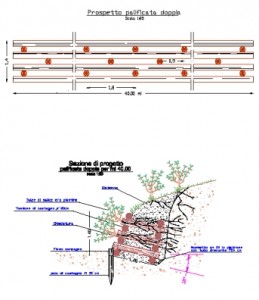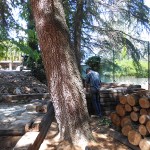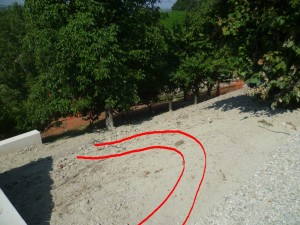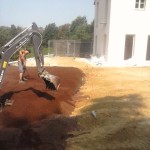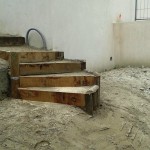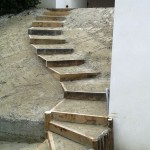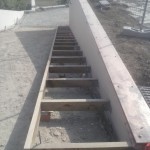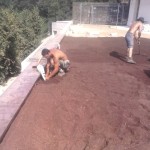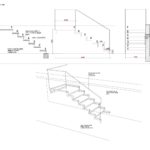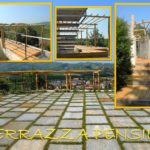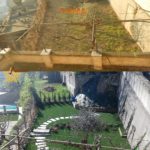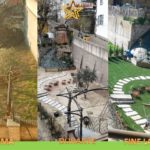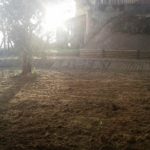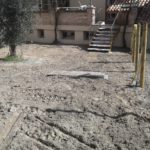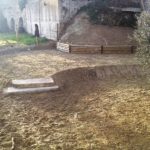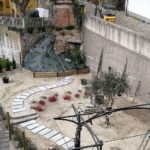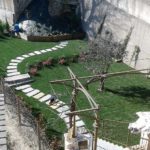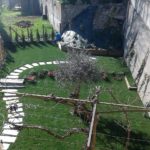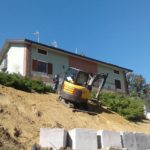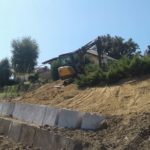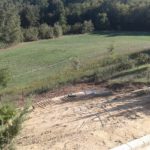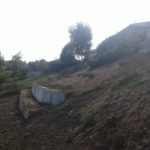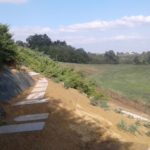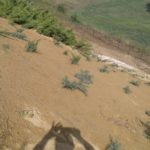Naturalistic engineering is the interdisciplinary set of technical and scientific knowledge that, through the use of environmentally friendly materials, tends to the production of interventions and works with low or very low environmental impact, for the rehabilitation and recovery of sites, with typologies realizations as harmonized as possible with the surrounding ecosystem.
Therefore the naturalistic engineering works can be used mainly in the following cases:
- Unstable slopes
- Draining support works for landslides
- Support for courtyards, gardens, terracing, road plans
- Prevention of possible landslides
- Wetlands
- Versant and scarps in general
The high professionalism and entrepreneurial exuberance, supported by the experience gained over the years have enabled the company team to achieve an excellent level in the construction, renovation and maintenance of gardens, Mediterranean Zen wall units and any green area, in the realization of works of naturalistic engineering
RESIZING A STEEP LAND IN A RESIDENTIAL GARDEN
A garden designed with a beautiful harmonious composition pleasantly captures the attention of those who visit it. It is a work of landscape architecture, where the gardener creates a balance between nature and decorative elements, which are not just accessories but a completion of the existing spaces, through a set consisting of hedges, lawns, trees, shrubs, gates, fences, paths, street lamps, stretches of water, walls and stairs.
In the preliminary phase of the design of a garden, we examine with an initial inspection the area of intervention that anyone who owns a piece of land, even a small one, intends to beautify and treat.
After taking the measurements of the size of the land, the adaptation of the spaces and elements in the topography is studied, to model the landscape in an elegant way according to the client’s tastes and the advice of the gardener.
It is the most important and complex phase that requires a profound knowledge of the design of gardens or parks and the talent to make each garden unique.
The creativity of the studio allows you to make large spaces appear large without ever giving the idea of emptiness in the larger ones, always trying to present the best solution taking into account the characteristics of the land and preserving existing trees and plants, if in good condition .
A small garden can be larger if, for example, the plants are arranged on the perimeter of the lawn, while in a wider green oasis you can offer differentiated landscaping styles, working on land movements, mirrors or water games, swimming pools, fountains, garden furniture and flower beds respecting the surrounding environment.
Differences in use of the garden are very important in the design of green spaces. Those with young children have different needs from an elderly couple who have more time to care for the garden; if the house is occupied only during the holidays, we must think of plants and flowers that do not need special care.
Accepted the estimate of costs and approved the project, considering all the elements and the budget available, agree the timing and methods for implementation, accepting the requests of the customer and coordinating all the essential work for the implementation of the garden or of the park together with its team of collaborators and experts in the field of gardening, design and safety.
THE PENSILE TERRACE
The hanging garden or terracing is a particular type of garden that is realized on the terrace or on a part of steep ground (as in our case). It is about placing a variety of plants in this space and recreating a rather interesting green environment.
Its origins date back to many centuries ago: the first testimonies were found in Babylon. These gardens were the symbol of how this civilization was able to create works of great ingenuity and beauty. The hanging garden is today one of the most requested gardens especially by those who live in an apartment in the city and do not have the possibility to have a classic garden.
If the garden develops in height, a possible solution can be to create terraces, connected to each other by a system of ladders.
Terraces, by definition, are strips of land that can have the most varied shapes and sizes.
They can also be paved as in our case; they can be developed by going down to lower altitudes than the house or the reference farmhouse: in this case it is said that the house is located upstream of the terracing or is located in the highest altitude.
Terracing is therefore not only an element of separation but also a decorative element within the entire garden. It comes precisely from the intersection of several geometric figures that interlocked with each other have created a particular shape that has allowed the designer to unleash the imagination using different dimensions.
The following realization was developed in Costigliole d’Asti during 2016 at a private residence.
Here the terracing has become the place of an outdoor kitchen. The shape of the site resembles that of a rectangle trapezoid.
The floor is made of wood that emerges as a platform from the building: it is marked on the longitudinal sides by wooden poles as supports of a pergola.
On a longitudinal side, take a wide stairway of 1.00 m. with six treads and a landing made of wood and a parapet with steel tubulars. By means of this, one arrives at the overlying maneuvering area.
This element of vertical development has a structure made up of rectangular side boxes in galvanized steel welded together and rectangular bars welded to these boxes for supporting the treads. A difference in height of about 1.20 meters is thus overcome.
The maneuvering area is instead characterized by a paved stone paving with regular shape with interstices of grass that mark the joints.
The green is elaborated with hedges of varying height and development at the edges of the terracing and of the maneuvering area.
A space that is difficult to use is thus torn from nature, such as a terracing: however, through a skilful design re-elaboration with the use of specialized and skilled workers, a kitchen connected in a peculiar way to the overhanging maneuvering area is new.
The kitchen is the centerpiece of the house inside the residential building: here it also becomes the characteristic element of the garden. It is as if the exterior and therefore the terracing joined with the interiors in order to create a very special constructive and decorative symbiosis.
- Planimetry
- Details of the stairway
- New life of the terrace: kitchen area and maneuver connected by a wooden and steel staircase
THE GARDEN: RECOVERY OF A PENSILE TERRACE
- Before and after the works
- Transformation of the garden
In Canelli, in 2016, an old roof garden was reorganized in order to respect the needs and habits of the new Commission.
An outdoor space has been obtained to live completely and at any time of the day. The landscape context and its forms have been taken into account, such as the exposure of the sun and the surrounding shadows, in order to obtain a homogeneous product. The plants were selected based on the exposure and climate of the area.
Originally the area was barren and uncultivated, characterized by an olive tree and bordered on two sides by wall septums; the remaining two instead by a fence made of wooden poles and wire mesh.
The area has been cleaned up, object of excavation by mechanical means and leveled.
- Work phase
- Excavation
- Smoothing
The part with a strong inclination of the ground and included at an angle between the built was maintained. The connection area between the slope and the countryside floor has been delimited by a wooden partition approximately 1m high.
- Wooden bulkhead
A sinuous passage with rectangular slabs of Luserna stone has been created up to the existing staircase leading to the house. About halfway along its path a modest elevation develops, given by two thicker slabs at the outermost point of the garden itself, almost as a privileged place to admire the surrounding landscape.
- The walkway
Evergreen shrubs and hedges have been planted, the latter along the fence. The olive tree has remained the focus of the garden. A grass cover, after sowing, drainage and improvement of the substrate, completes the intervention. The Mediterranean garden takes on new life. The outdoor space becomes so extremely rewarding. It is a garden in which every space has been carefully studied. Vegetation is regulated, limited and not wild. The common thread is the turf that laps the walkway and the built, emphasizing at the same time the terracing.
- The complete garden
- Finished works
SCARPED CONSOLIDATION: THE STABILIZATION OF THE SLOPE AFTER EROSION.
In the hills of the Asti area, in the municipality of Roatto, in a hilly area, the rupture of a water pipe inside a small villa has caused infiltration into the soil, causing a land movement towards the valley to emerge in September 2016, damaging the retaining wall.
The property faces west towards via San Michele, at the foot of the concentric and east towards the valley.
- The escarpment
- Containment wall blocks
- The slope
The arrangement through naturalistic engineering techniques initially envisaged the use of mechanical means, in some areas manually, with which to remove the earth.
The consolidation of the damaged slope involved first a water regulation with superficial and deep drains.
The slope has been reduced with remodeling and grading works in order to contain the slope of the land.
- The valley to the east
- The slope
- The slope of the ground
The laying of a geotextile has acted as a reinforcing element due to its high friction properties and its ability to absorb tensile stresses. The capacity of the land is increased considerably, reducing the risk of subsidence and breakage and ensuring overall stability of the embankment.
- The slope
- The vegetation
- The walkway
The technique used to transfer the tangential stresses to structural elements took place through block steps.
The mechanical consolidation function is then entrusted to the restoration of the retaining wall itself and to the emergence of the herbaceous and shrubby vegetation.
- The escarpment
- The slope to the east
- The slope
Therefore the subsequent reconstruction of the vegetation cover completed the intervention, limiting the erosive action of the meteoric water.
The walkway with stone slabs allows us to take full advantage of this suggestive rural area facing east on a still bucolic area.

